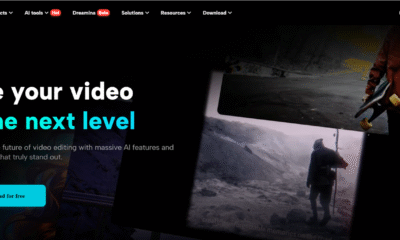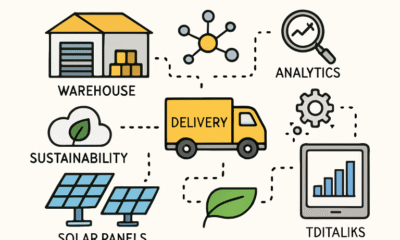Tech
Overcoming Common Challenges in Shopify Plus Development for Complex Stores

The decision to migrate to or build upon Shopify Plus represents a strategic inflection point for enterprise retailers. While the platform offers compelling advantages in terms of scalability, reliability, and time-to-market, the reality is that complex e-commerce operations often encounter significant challenges that can derail implementation timelines, exceed budgets, and compromise the customer experience that drives revenue growth.
The most successful enterprise implementations are those where leadership approaches Shopify Plus development with a clear understanding of the platform’s capabilities and constraints. This requires moving beyond marketing promises to develop realistic assessments of what can be achieved within the platform’s architecture and what may require creative solutions or alternative approaches.
The stakes are particularly high for complex stores that serve diverse customer segments, manage extensive product catalogs, or operate across multiple markets. These organizations cannot afford implementation failures or performance issues that could impact customer satisfaction, operational efficiency, or competitive positioning. Success requires careful planning, skilled execution, and strategic decision-making that aligns technical capabilities with business objectives.
Understanding the Complexity Challenge
Enterprise e-commerce operations often involve requirements that extend far beyond standard retail scenarios. These may include sophisticated pricing structures, complex inventory management across multiple locations, intricate customer segmentation, and integration with enterprise resource planning systems that handle millions of transactions annually.
The challenge is that Shopify Plus, despite its enterprise positioning, maintains certain architectural constraints that were originally designed for simpler use cases. While these constraints contribute to the platform’s reliability and ease of use, they can create significant obstacles for organizations with complex operational requirements.
Many organizations underestimate the level of customization required to adapt Shopify Plus to their specific needs. What appears to be a straightforward platform implementation can quickly evolve into a complex development project requiring extensive custom coding, third-party integrations, and architectural decisions that will impact operations for years to come.
The key to success lies in early recognition of these complexities and development of implementation strategies that work within the platform’s strengths while addressing its limitations through thoughtful design and selective customization.
Performance Optimization at Enterprise Scale
Performance challenges often emerge as the most critical issue facing complex Shopify Plus implementations. While the platform handles standard e-commerce scenarios effectively, enterprise-level traffic patterns, extensive product catalogs, and sophisticated functionality can strain system performance in ways that significantly impact user experience and conversion rates.
The root cause of many performance issues lies in the platform’s liquid templating system and theme architecture, which can become bottlenecks when handling complex product configurations, advanced filtering, or dynamic content generation. Organizations with thousands of products and multiple variants often discover that standard approaches to catalog management create unacceptable page load times.
Database query optimization becomes crucial for stores with complex product relationships, extensive customization options, or sophisticated search and filtering requirements. The platform’s standard query patterns may not be sufficient for advanced use cases, requiring custom solutions that work within Shopify’s API limitations while delivering the performance expectations of enterprise customers.
Caching strategies must be carefully designed to balance performance improvements with the need for real-time inventory updates, personalized content, and dynamic pricing. This is particularly challenging for organizations that operate across multiple time zones, currencies, or customer segments that require different experiences.
Integration Architecture and Data Synchronization
Enterprise organizations rarely operate in isolation, and successful Shopify Plus implementations must integrate seamlessly with existing business systems including ERP platforms, customer relationship management systems, inventory management solutions, and financial reporting tools.
The complexity of these integrations is often underestimated during the planning phase. Data synchronization between systems with different data models, update frequencies, and business logic can create significant technical challenges that require sophisticated middleware solutions and careful error handling.
Real-time synchronization requirements can be particularly challenging given Shopify’s API rate limits and the asynchronous nature of many platform operations. Organizations that require immediate inventory updates, pricing changes, or customer data synchronization may need to implement complex queuing systems and error recovery mechanisms.
Data integrity across multiple systems becomes a critical concern when customer orders, inventory levels, and financial transactions must remain consistent across platforms. This requires comprehensive testing, monitoring, and reconciliation processes that can detect and resolve discrepancies before they impact business operations.
Customization Within Platform Constraints
Shopify Plus offers extensive customization capabilities, but these must be balanced against platform limitations that can constrain certain types of functionality. Understanding these constraints early in the development process prevents costly redesigns and ensures that customizations remain maintainable over time.
The platform’s app ecosystem provides solutions for many common requirements, but enterprise organizations often discover that existing apps don’t fully address their specific needs. This creates decisions about whether to modify existing solutions, develop custom apps, or implement workarounds that may compromise functionality or user experience.
Custom development must consider the platform’s upgrade cycles and API changes that could affect custom functionality. Organizations need strategies for maintaining custom code, testing compatibility with platform updates, and ensuring that customizations don’t create technical debt that becomes expensive to maintain.
Theme customization presents particular challenges for complex stores that require sophisticated user interfaces, advanced functionality, or integration with external systems. The liquid templating system, while powerful, has limitations that may require creative solutions or alternative approaches for certain types of functionality.
Multi-Market and Multi-Currency Operations
Global operations introduce additional complexity layers that can significantly impact Shopify Plus implementation strategies. Managing multiple currencies, tax jurisdictions, shipping methods, and localization requirements requires careful planning and often custom development to address platform limitations.
Currency conversion and pricing strategies must account for fluctuating exchange rates, local market conditions, and complex business rules that may not be supported by standard platform functionality. Many organizations require custom pricing engines that can handle sophisticated logic while maintaining performance at scale.
Inventory management across multiple markets becomes complex when dealing with different suppliers, fulfillment centers, and regulatory requirements. The platform’s inventory system may not provide sufficient granularity for organizations that need to track products across multiple locations with different availability, pricing, or compliance requirements.
Tax compliance represents a significant challenge for multi-jurisdictional operations, particularly when dealing with digital products, services, or complex product classifications. While Shopify Plus provides tax calculation capabilities, many enterprise organizations require custom solutions that can handle their specific compliance requirements.
Advanced Customer Segmentation and Personalization
Enterprise retailers often require sophisticated customer segmentation capabilities that go beyond the platform’s standard customer grouping functionality. This may include dynamic segmentation based on purchase history, behavioral data, or integration with external customer intelligence platforms.
Personalization requirements can strain the platform’s capabilities, particularly when dealing with real-time content customization, dynamic product recommendations, or complex business rules that determine what content or pricing individual customers should see.
The challenge is implementing these capabilities while maintaining site performance and ensuring that personalization logic doesn’t create maintenance burdens or compatibility issues with platform updates. Many organizations find that Shopify Plus development services must be carefully selected based on their experience with complex personalization requirements.
Strategic Implementation Approaches
Successful complex store implementations require phased approaches that prioritize core functionality while allowing for iterative enhancement over time. This prevents overwhelming development teams and allows for learning and adjustment as the platform’s capabilities and limitations become better understood.
Risk mitigation strategies should include comprehensive testing environments, rollback procedures, and monitoring systems that can detect issues before they impact customer experience. Given the complexity of enterprise implementations, robust quality assurance processes are essential for maintaining system stability.
Performance monitoring and optimization should be ongoing activities rather than one-time implementations. Complex stores require continuous monitoring of system performance, user experience metrics, and business KPIs to ensure that technical decisions are supporting business objectives.
Vendor Selection and Team Composition
The success of complex Shopify Plus implementations often depends more on team expertise than on platform capabilities. Organizations need development partners who understand both the platform’s technical architecture and the business requirements that drive enterprise e-commerce operations.
Team composition should include specialists in platform development, integration architecture, performance optimization, and user experience design. The most successful implementations involve teams that can think strategically about business requirements while implementing tactical solutions that work within platform constraints.
Long-term partnership considerations are important because complex stores require ongoing development, maintenance, and optimization. The ideal development partner becomes an extension of the internal team, providing strategic guidance on platform evolution and business growth opportunities.
Conclusion
The challenges facing complex Shopify Plus implementations are significant but not insurmountable. Success requires realistic assessment of platform capabilities, strategic planning that accounts for complexity, and implementation approaches that prioritize business objectives while working within technical constraints.
Organizations that approach these challenges with proper preparation, skilled development teams, and realistic timelines can achieve implementations that deliver significant business value while providing foundation for continued growth and evolution.
The key is recognizing that complex e-commerce operations require sophisticated approaches that go beyond standard platform implementations. With proper planning and execution, Shopify Plus can serve as a powerful foundation for enterprise e-commerce success.
Devsinc brings deep expertise in complex Shopify Plus implementations, helping enterprise retailers navigate technical challenges while delivering solutions that support business growth and operational excellence in competitive e-commerce markets.

























